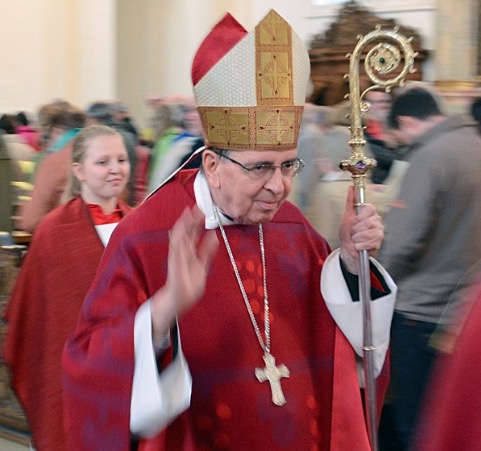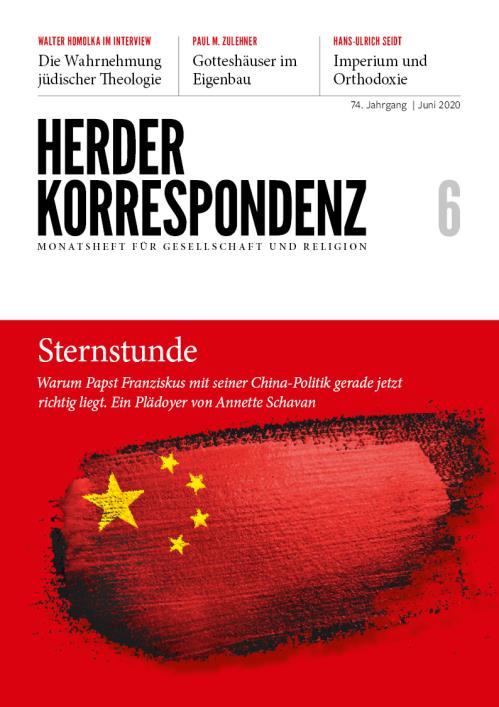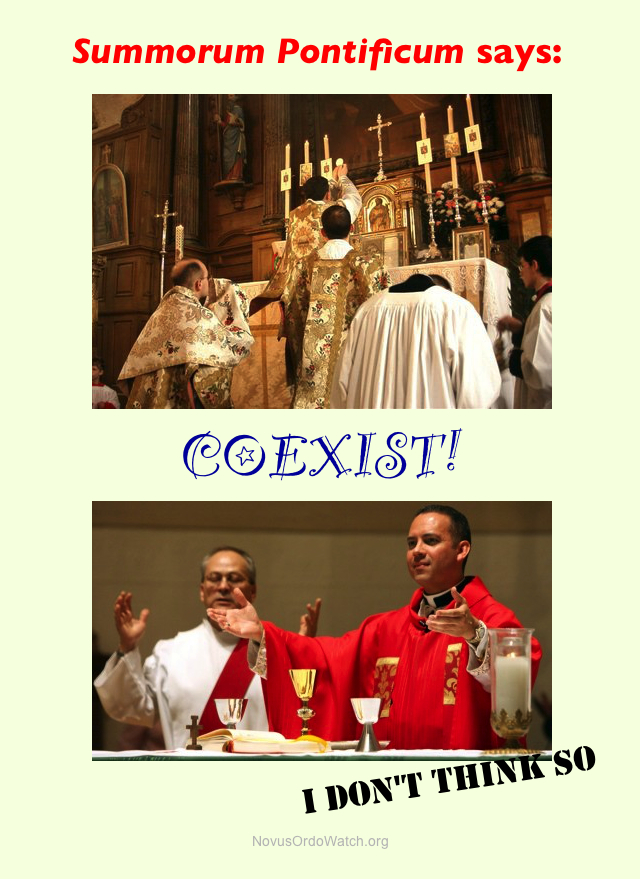Back to the 1965 Hybrid Missal?
Vatican “Cardinal” Koch: Traditional Latin Mass and Novus Ordo Rite need to be Fused Together

Guess which rite he prefers: Kurt Koch (b. 1950)
The Swiss Modernist “Cardinal” Kurt Koch is the Vatican’s chief of ecumenism. In January of 2017, he complained that there was no consensus on even so much as the goal of ecumenism. In other words, they’re all journeying, as Francis likes to say, they just have no idea towards what. All they know is that they’ve got to keep moving forward.
As an ecumenist and liturgist, Mr. Koch would like to move forward also with regard to the Sacred Liturgy, or what in the Novus Ordo religion falls under that category. The current state of affairs — an ordinary and an extraordinary form of a nevertheless single Roman rite, side by side — he does not see continuing in the long term. Before we get to that, however, let’s review some background information.
In 2007, after decades of indults (special permits) being required, “Pope” Benedict XVI granted all priests around the world the right to offer Mass according to the 1962 Missal, often called the Traditional Latin or Tridentine Mass, without special permission from the local bishop, at least in private. This was welcomed by all — clergy and laity alike — who did not want to use or be subjected to the awful 1969 Novus Ordo Missae of Paul VI, commonly known as the “New Mass.” At the same time, it created an odd situation in the Vatican II Church: You now had two very visually different rites of Mass both claiming to be the Roman rite of Mass.
To preemptively reconcile such an open conflict between two competing missals, Benedict XVI concocted the idea that the Traditional Mass and the Novus Ordo “Mass” are not two different rites but merely “two usages of the one Roman rite” (Motu Proprio Summorum Pontificum, art. 1). In other words, Ratzinger maintained that both missals were expressing the same Faith, just in different ways or forms: one “ordinary”, the other “extraordinary” — and you can guess which is which.
How manifestly false that idea is need not be explained here; a mere look at what people who have been exposed to the New Mass for the last six decades actually believe — as opposed to what Catholics believed before Vatican II — suffices; not to mention the strikingly different externals. But this didn’t matter to Benedict — he needed to find a way to reconcile the two different rites and pretend that there is no contradiction. Similar to how he would later make up the position of “Pope Emeritus”, he simply declared it to be so. As “Pope”, who was going to challenge him on it, anyway?
Since 2007, a lot of water has flowed down the Tiber, and while Benedict is enjoying his retirement in Vatican City, “Pope” Francis is now the man at the top.
Although the 1962 Mass is quite popular especially among the young (who are, as at other times Club Francis never ceases to inform us, the future!), Francis is known to be a virulent opponent of it, or anything resembling Catholicism for that matter. Just recently the traditionalists in the Vatican II Church became alarmed when it was reported that Rome had begun questioning dioceses around the world with regard to their Latin Mass culture.
 Now “Cardinal” Koch is adding more fuel to the fire by declaring in the June 2020 edition of the German Modernist academic rag Herder Korrespondenz that in the long run, there can be no co-existence of the two liturgical forms of that one Roman rite: “In the long term, the two forms cannot continue to co-exist”, he is quoted as saying in Lucas Wiegelmann’s article (“Alte Messe: Zahlen, bitte”, p. 10; our translation).
Now “Cardinal” Koch is adding more fuel to the fire by declaring in the June 2020 edition of the German Modernist academic rag Herder Korrespondenz that in the long run, there can be no co-existence of the two liturgical forms of that one Roman rite: “In the long term, the two forms cannot continue to co-exist”, he is quoted as saying in Lucas Wiegelmann’s article (“Alte Messe: Zahlen, bitte”, p. 10; our translation).
In this Koch is merely pointing out what was, or should have been, clear from the very beginning. In fact, he is essentially confirming the meme we published some time ago which makes that same point, namely, that the two liturgical rites simply cannot exist side-by-side:

Koch goes on to explain that there cannot be division over the missal since the Mass (“Eucharistic celebration”, in Vatican II speak) celebrates the Church’s unity. Thus his wish is “to have a reconciliation between the two forms in the future so that at some point we will have only one form as a synthesis…” (ibid.).
Wasn’t it obvious that this would eventually need to happen? In our own assessment of Summorum Pontificum in 2007, we predicted that
what will come out of this “co-existence” of the “two forms” of “one and the same rite” will, at the end of the day, result in a total butchering of the 1962 Missal, so that, eventually, Benedict XVI can stop the nonsense of “two forms” of “one rite” and simply synthesize them together…, and the result will probably be a New Mass with a bit of Latin and a little more incense, or some sort of a hybrid missal like the one that was already in use in 1965.
(“‘One and the Same Rite’? How Benedict XVI’s Motu Proprio Summorum Pontificum Aims to Destroy the Traditional Latin Mass”, Novus Ordo Watch, Oct. 12, 2007)
Although a widespread butchering of the 1962 Missal has, to our knowledge, not occurred up until this point, the synthesizing of the two missals into one is what “Cardinal” Koch said years ago already had been Benedict XVI’s game plan all along.
On May 15, 2011, Koch gave a lecture at a Summorum Pontificum conference in Rome, in which he stated:
Benedict XVI knows well that in the long term we cannot remain with a coexistence between the ordinary and extraordinary forms in the Roman rite, but that the Church will again need in the future a common rite… However, given that a new liturgical form cannot be decided in an office, as it requires a process of growth and purification, for the time being the pope stresses above all that the two forms of use of the Roman rite can and must enrich one another mutually.
(“Cardinal” Kurt Koch, “The Old Liturgy, an Ecumenical Bridge”, May 15, 2011; quoted in Inma Álvarez, “Priest Reflects on Old Liturgy in Church’s Future”, Zenit, May 16, 2011.)
Those who still adhere to the Vatican II Sect, therefore, can look forward to a new hybrid missal in the future; and those who were hoping for a Zuhlsdorfian “brick-by-brick” restoration of the old, will find out that in the end the people from both camps — Latin Mass and Novus Ordo Missae — will end up with the same synthesized liturgy, they will just have arrived at it from opposite directions.
Thus we see that for Benedict XVI Summorum Pontificum was never about returning to Tradition. Rather, it was about reaching all those rigid, dyed-in-the-wool traditionalists in order to ensure that they, too, would join him and the rest of his Modernist gang in moving forward.
Image sources: Wikimedia Commons (Andreas Faessler; cropped) / herder-korrespondenz.de / own creation with internet photos
Licenses: CC BY-SA 4.0 / fair use / unknown



No Comments
Be the first to start a conversation